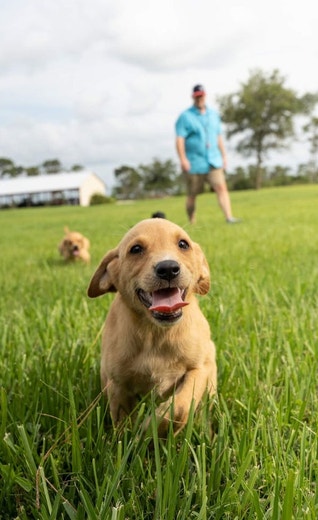
Dog Food And Feeding Myths
Like any science, pet nutrition is associated with folklore about the feeding of dogs and cats. Some of these ideas have their origins in science but in some cases, facts have been exaggerated, obscured, or misapplied. Other feeding practices are ones that owners enjoy for emotional reasons but which have, in some cases, potential health risks for their pets. Let’s review a few common nutritional myths and separate fact from fiction!
DIET CAUSES “RED COAT”
The “red coat” problem refers to an unexpected change in coat color from almost any normal base color to a red or reddish brown. Reports of “red coat” have occurred for a number of years, but cases are infrequent and inconsistent, making the condition difficult to study. Diet, among other factors, has been identified by some owners as a potential underlying cause of “red coat.” Here are the facts:
Nutrient deficiency: It is true that a dietary deficiency of certain nutrients can adversely affect coat quality and color. A copper deficiency or deficiency of the essential amino acids tyrosine and phenylalanine can lead to changes in coat quality and color. However, essential nutrient deficiencies can also cause serious health problems, such as skin lesions and impaired growth.
Pet food companies that make complete and balanced pet food will formulate their diets with optimal levels of essential nutrients including copper and amino acids.
- Beet pulp: Beet pulp is often targeted as a potential cause of “red coat” in dogs, because of the perception that this ingredient is the color of beets—red. However, the beet pulp that is included in pet foods is not red in color. It is derived from sugar beets (not red beets) from which the sugar has been extracted and is actually light gray in color. Moreover, there is no evidence suggesting a connection between the consumption of beet pulp and a change in coat color in dogs or cats.
Other causes: So, what might cause a dog’s coat to change color and take on a red hue? We know that red coat can be caused by a number of environmental factors. These include:
- Exposure to sunlight: Spending time outdoors can have a bleaching effect on a pet’s coat, typically imparting a red hue to black hairs.
- Porphyrin staining: Porphyrin is secreted in saliva and tears and is responsible for the reddish staining that is seen around the eyes of some dog breeds with white or light-colored coats. Dogs that self-groom or lick excessively can deposit porphyrin on their coats, causing these areas to stain red.
COPROPHAGY (STOOL-EATING) IS CAUSED BY A NUTRIENT DEFICIENCY
Coprophagy (stool eating) is relatively common in dogs. Contrary to popular belief, the majority of dogs who tend to eat stool are not consuming a diet that is deficient in one or more essential nutrients, nor do they have gastrointestinal disease. Here are the facts:
- Stool-eating is not unusual: Although it may be hard for some owners to understand, stool eating is actually a relatively common behavior in dogs. This is because they are scavengers by nature and readily consume a wide variety of items that are unappealing to people.
- Possible cause: Female dogs routinely consume the feces of their puppies as a way to keep the whelping area and their puppies clean. Coprophagy is also readily learned among dogs within the same household or kennel. In some cases, boredom or confinement in an unclean kennel or cage may be an underlying cause.
- Prevention and training: The best way to prevent stool eating is to limit access to fecal matter by monitoring walks, restrict the dog’s access to the feces of wild animals such as rabbits and deer, and keep the yard picked up. In addition, training techniques such as teaching dogs to “leave it” and to reliably come when called are helpful. Providing regular walks, exercise and mentally stimulating activities for your dog is also essential for preventing all types of boredom-induced behavior problems!
FEEDING GARLIC OR ONIONS REPELS FLEAS
There is no evidence to indicate that feeding garlic or onion has a repellent effect on fleas or any other external parasite. In fact, they are harmful to dogs and you may end up with a flea problem if not using a product recommended by your veterinarian. Here are the facts:
- Onion and garlic: Neither of these foods has any effect at all upon external parasite infestations in dogs. Moreover, feeding large amounts of onion or garlic to dogs (which they do love) can be toxic! Excess consumption of onions can cause a type of hemolytic anemia that may be life threatening. Similarly, the ingestion of excessive amounts of garlic can cause damage to red blood cells and may lead to anemia. Signs of toxicity may include diarrhea, vomiting, depression, fever, and dark-colored urine. If onion or garlic toxicity is suspected in your dog, veterinary care should be sought immediately.
- Use proper flea prevention: Talk to your veterinarian about methods of prevention and treatment. Fleas can not only be a nuisance, they can also be a health hazard for humans and pets, but fortunately, many effective and safe flea control products exist.




